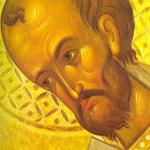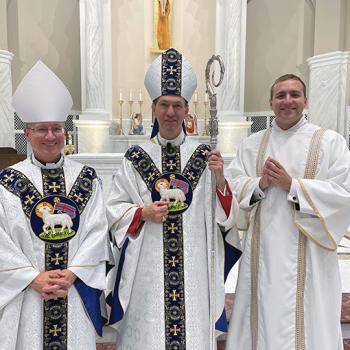Destroyer Of The gods: About The Author
Larry Hurtado was, and is, known as a New Testament scholar of the highest caliber. His contributions have helped usher in a new understanding of early Christianity and the background in which those events took place. Dr. Hurtado completed his Ph.D. at Case Western Reserve University in 1973 with a dissertation titled Codex Washingtonianus in the Gospel of Mark: Its Textual Relationships and Scribal Characteristics[1]. Most recently he was the professor emeritus of New Testament language, literature, and theology at the University of Edinburgh. He sadly died in 2019 after a battle with cancer. Destroyer of the gods was published in 2016 by Baylor University Press.
Cultural Amnesia
In his book Destroyer of the gods: Early Christian Distinctives In The Roman World, Dr. Hurtado is very upfront with his intentions. It is to address what he calls “cultural amnesia”[2]. Admittedly, many Christians today have been born into the faith and it is something that has always been. However, this was not the case when Christianity began. Hurtado explains that it was a faith that was counter-cultural in many respects. He breaks this down into past and present aspects. He explains that when Christianity started the Romans saw it as a superstition and this fact is lost on Christians today[3]. Christianity was a very distinct religious movement that was very different than the state sanctioned religions of the Roman empire.
Dr. Hurtado goes back to 30 A.D. to take a look at the beginnings of movement that was initially made of Jews in the Roman province of Judea[4]. They were followers of Jesus of Nazareth, and they were referred to as Christians. Though The exact date this happened is unknown, it was in the first century and is documents in the book of Acts (Acts 11:26). Dr. Hurtado continues in describing how Christianity began and describes how the resurrection produced a fervor that helped the movement spread very quickly[5]. He then described some of the opposition of the Jewish leaders and the pagans of the day. He describes how this opposition led to the execution of James in Jerusalem and emperor Nero unleashed a brutal persecution that sought to destroy the young Christian movement[6].
Opposition To The Faith
In Chapter one Dr. Hurtado gives some interesting background into Jewish opposition by using the example of the Apostle Paul when he was simply known as Saul. Paul, of course, was a self-proclaimed Pharisee and carried with him a zeal for the law. Dr. Hurtado states that the issue that Paul had for Christians was their inappropriate reverence for Jesus[7]. Dr. Hurtado then discusses Paul’s letter to the Galatians and concludes that prior to his conversion, that Jesus was accursed in accord with Deuteronomy 21:23[8]. He later came to see the death of Jesus for what it was, a gift and part of the redemptive plan of God for mankind.
Dr. Hurtado also points out, and rightly so, that we forget that Jesus was condemned by authorities of the Temple in addition to the Roman Empire. He is upfront in saying that we have no direct evidence of this, but he utilized the view of Paul prior to his conversion as implicit evidence. It is also likely that Jesus was condemned for blasphemy and being a false teacher and was a threat to established Jewish tradition[9].
Dr. Hurtado lays out the hatred that pagan officials had for Christians. He cited Roman historians, such as Tacitus, that wrote that Nero blamed Christians for the great fire that consumed Rome[10]. Tacitus also writes that Christians were hated for their horrible superstitions and that they hated the human race[11]. Dr. Hurtado gives many more examples of pagan hatred of Christians in the Roman empire and utilizes examples from Suetonius, Pliny the Younger, Galen, Marcus Aurelius, Lucian, and Celsus, By the second century Christianity was growing despite opposition and was on its way to dominance in the empire[12]. This era saw the rise of apologetics with people such as Justin Martyr seeking to articulate the faith and seeking to answer the accusations that were falsely thrown at Christians.

The Nature Of Religion
At the beginning of Chapter two Dr. Hurtado begins and interesting discussion on the nature of religion. What we know and describe as religion in the 21st century would cause problems in the Roman world[13]. As a society we see religion as something separate from other parts of our lives. There are many faiths, and in reality, one could take different parts of all and create their own religion. Dr. Hurtado describes this as religion a la carte[14]. This concept in the western world of religion being separate from other parts of our lives is problematic in many ways. However, in the Roman period it was who you were and defined your society.
Therefore, this new Christian movement was accused of many things such as an uprising against the empire. The Romans assumed that the roman gods were real and it was therefore a necessity for all in the empire to sacrifice to them for the good of the empire[15]. The Christians correctly saw this as idolatry and could not perform the sacrificial act. Christians had their own rituals and practices that differentiated it from the practices of the Romans[16].
Christianity Made Demands
Dr. Hurtado points of in Chapter three how the religious responsibilities of the Romans were akin to their ethnicity[17]. These were so intertwined that, as Dr. Hurtado explains, if you moved you took the Roman gods with you. There were also various voluntary religions that one could belong to in and were not associated with the Roman gods[18]. Dr. Hurtado gives the examples of the cult of Mithras and Isis for this[19]. Why was this not allowed for Christianity? Dr. Hurtado explains that these voluntary religions did not demand the exclusive attention of the adherents, but this was not the case for Christianity. To become part of the Christian faith was to exchange your religious identity and replace the Roman deities[20].
The Importance Of Sacred Texts
In chapter four Dr. Hurtado brings to the forefront how copying and distributing sacred texts was something unusual to the Christians[21]. This is not something that the Romans did and the importance of these texts can be seen illustrated in the First Apology of Justin Martyr. Dr. Hurtado notes how Justin writes about “the writings of the prophets and memoirs of the Apostles”[22]. The former would be the Old Testament with the latter being the New. The readings of these are key components of what he describes as the worship gathering of the church. Some of the practices of early Christians come from the Jewish roots of Christianity. This is what Dr. Hurtado refers to as the “Jewish Matrix”[23].
Reading sacred texts in a communal setting was something done by early Christians and in synagogues, not in Roman temples. Dr. Hurtado describes how the letters of Paul were sent, copied, and spread throughout the empire, and how the author of 2 Peter was discussing these letters as scripture[24]. The note that Dr. Hurtado gives regarding Marcion is interesting. Dr. Hurtado states that Justin Martyr discusses the Gospels being read, and how Marcion had issue with this and concluded that only the Gospel of Luke was the true gospel[25]. All the texts that were being produced further differentiated the Christian faith from its Roman counterparts.

Requirements And Norms
Dr. Hurtado begins chapter five in a very interesting way. He once again goes back to the concept of religion in the 21st century and points out that people see religion as a series of rules. Dr. Hurtado calls this “do’s and don’ts” of how to live and states this was not the case in the ancient world[26]. Christianity had requirements of how people should live in a social setting and how they should act behavior wise. Dr. Hurtado is careful not to fall into a common stereotype of describing Roman practice as hedonistic and morally bankrupt, but does say that the were “depraved and cruel”[27].
Dr. Hurtado then discusses various social norms of the time. One such example is what is known as baby exposure. This is the act of abandoning the child in the trash or some other site and left to die[28]. In some cases, the child was spared death and brought up as a slave. Abortion was also a common practice and these two who condemned by Justin Martyr. He essentially wrote that there is no way that Christians could be okay with these practices[29]. Philo and Josephus also condemned the practices. The violent Gladiator games were popular among the Romans, but also detested by Christians. This shows that Christians had a different way of life and were at odds with accepted norms of the day[30].
Critique of Destroyer of the gods
This book goes in depth as to how Christianity was different from the Roman Empire. There were a few things of note that were especially helpful. Dr. Hurtado went in depth with the Jewish and Pagan opposition to Christianity. This went a long way in establishing the rift that would come in later years. Dr. Hurtado also goes in depth into how Christianity went against many norms of the day. For example he discusses “child exposure” and the Gladiator games in depth and how these were practices that were normal in society, but seen as objectionable for Christians.
This is one area that the book would have benefited from more historical detail. Dr. Hurtado mentions Justin Martyr several times in the book. It would have been beneficial to se how the Roman Empire also categorized Christians as incestuous, cannibals, and atheists and how Justin Martyr answered those allegations. It would have cemented even further how counter-cultural Christianity was in the Roman Empire.
In his chapter about Christianity being a “bookish” faith he discusses the why and why it was so different that Roman religion. Many books were being written, and how many of the books in the Bible today were already being read around the empire because of the way they were copied and distributed. This went a long way in Christianity eventually being tolerated in the Roman Empire, and I do not think that Dr. Hurtado went into enough detail as to why this was so important. I also don’t think enough credance was given to the role of oral tradition in the spread of the faith as the Bible had not been formally compiled as of yet.
Overall, the Destroyer of the gods is a helpful look into the beginnings of Christianity and why Christianity changed the world as we know it. It called for righteous and ethical living, demanded that Christianity take the place of the Roman deities in followers lives, copied and distributed sacred texts, and taught about Jesus who died for the sins of mankind. Christians worldwide would benefit from knowing the history of their faith a little more, and this book is good way to do so.
Bibliography
Capes, David B., April D. DeConick, Helen K. Bond, and Troy Miller, eds. Israel’s God and Rebecca’s Children: Christology and Community in Early Judaism and Christianity; Essays in Honor of Larry W. Hurtado and Alan F. Segal. Waco: Baylor University Press, 2007.
Hurtado, Larry. Destroyer of the Gods: Early Christian Distinctives in the Roman World. Waco: Baylor University Press, 2016.
[1]. David B. Capes et al., eds., Israel’s God and Rebecca’s Children: Christology and Community in Early Judaism and Christianity; Essays in Honor of Larry W. Hurtado and Alan F. Segal (Waco: Baylor University Press, 2007).
[2]. Larry Hurtado, Destroyer of the Gods: Early Christian Distinctives in the Roman World (Waco: Baylor University Press, 2016), 1.
[3]. Ibid.
[4]. Ibid., 2.
[5]. Ibid., 3.
[6]. Ibid.
[7]. Ibid., 18.
[8]. Ibid.
[9]. Ibid., 20.
[10]. Ibid.
[11]. Ibid., 21.
[12]. Ibid., 34.
[13]. Ibid., 38.
[14]. Ibid.
[15]. Ibid., 42.
[16]. Ibid., 76.
[17]. Ibid., 79.
[18]. Ibid., 82.
[19]. Ibid., 83.
[20]. Ibid., 86.
[21]. Ibid., 105.
[22]. Ibid., 106.
[23]. Ibid., 109.
[24]. Ibid., 114.
[25]. Ibid., 115.
[26]. Ibid., 143.
[27]. Ibid.
[28]. Ibid., 144.
[29]. Ibid., 146.
[30]. Ibid., 180.













